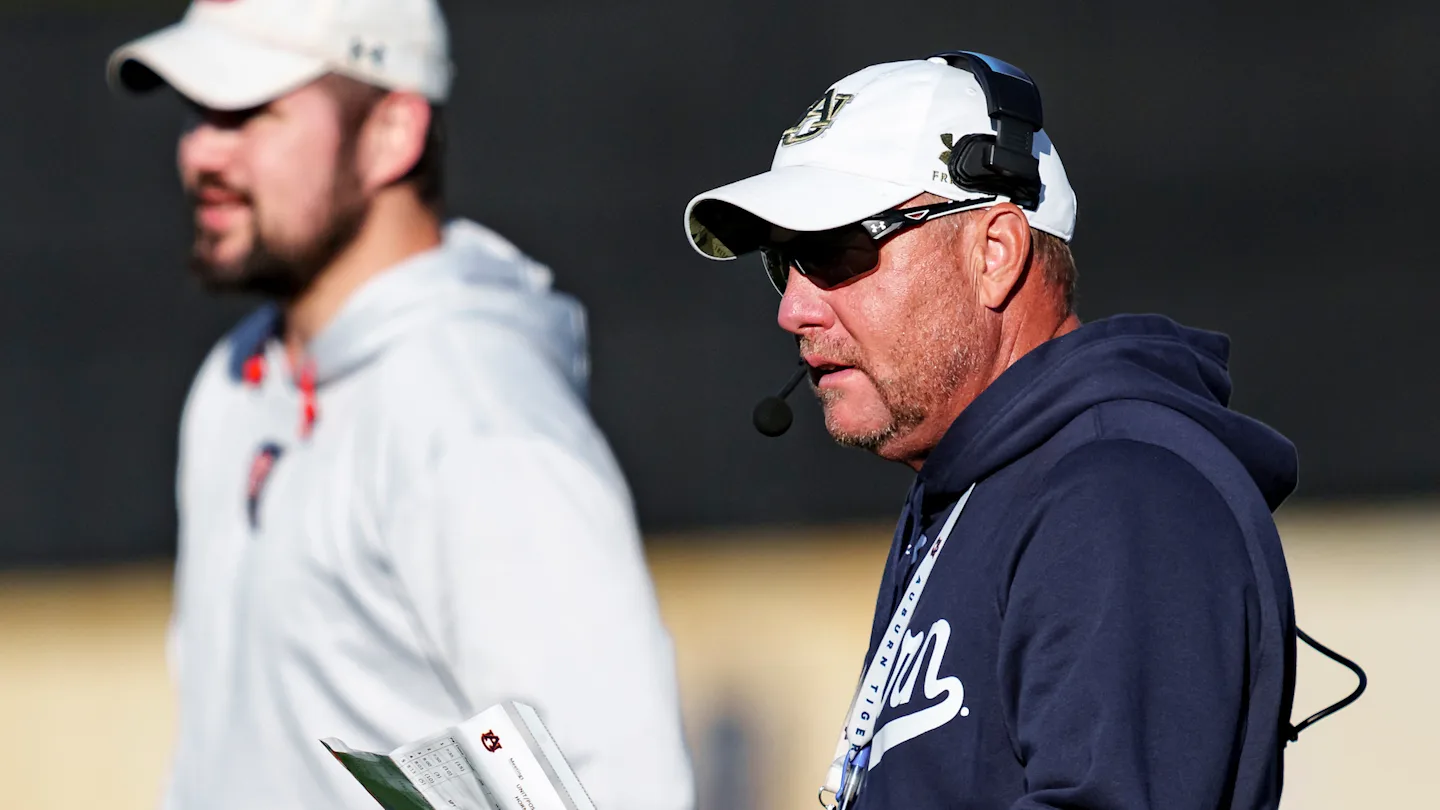In the ever-evolving world of college basketball, where programs often experience cycles of highs and lows, few programs have faced as much flux in recent years as the Auburn Tigers. Auburn basketball, once considered a rising power in the Southeastern Conference (SEC), has experienced an array of changes that have challenged its stability and consistency. After a roller-coaster few seasons, the Tigers are counting on one key factor to help turn things around in 2025: stability. Whether it’s leadership, roster continuity, or a commitment to a sustainable and long-term vision, Auburn is aiming to find consistency in 2025 to return to prominence and potentially compete for an SEC title and NCAA Tournament success.
Head coach Bruce Pearl, now entering his tenth season at Auburn, has built a program that has seen some remarkable highs, including making a run to the Final Four in 2019 and regularly competing for NCAA Tournament berths. However, the years following that success have been marked by inconsistency, roster turnover, and struggles with maintaining elite-level performance. To bring the program back into the national conversation, Auburn is focusing on stabilizing key aspects of the program—specifically leadership continuity, player development, and roster balance. For Auburn to turn things around, it will need a careful combination of these elements and a return to the values that once made it a competitive force in college basketball.
Auburn is well aware that the window of opportunity in the SEC and the NCAA Tournament is always closing. With top-tier programs like Kentucky, Alabama, and Arkansas always posing a challenge, the Tigers will need to find stability on and off the court if they hope to compete with these perennial juggernauts. As such, the year 2025 presents a critical opportunity for Auburn basketball to get back on track and establish itself as a legitimate contender. Let’s dive deeper into the factors contributing to Auburn’s hope for a turnaround, examining the challenges the program has faced and how it plans to leverage stability in the coming years.
The Road to Stability: Bruce Pearl’s Vision
Auburn’s path to stability starts with its leadership: Bruce Pearl. Since Pearl’s arrival in 2014, the Tigers have undergone a remarkable transformation. He brought excitement, energy, and a sense of optimism to a program that had long struggled to break through in the competitive SEC. Pearl’s fast-paced, up-tempo style was a significant departure from the more traditional, slower styles of many of his contemporaries, and it injected new life into Auburn’s basketball culture. Under Pearl, Auburn reached its first Final Four in program history in 2019, becoming one of the most talked-about teams in the nation.
However, the years following the Final Four appearance have been marked by inconsistency. After losing key players to the NBA draft and dealing with injuries, Auburn has struggled to maintain the same level of excellence. In particular, the program has faced issues with roster turnover, often losing talented players early to the NBA, as well as struggling to find the right balance of talent and depth. These challenges have made it difficult for Pearl to build a program with sustained success at the highest level.
For Auburn to turn things around, stability under Pearl’s leadership is crucial. While he’s had success recruiting high-level talent, his ability to keep players in the system longer and develop a culture of continuity will be key. Pearl’s system relies heavily on player development, and keeping players around for multiple years gives them the opportunity to mature both on and off the court, allowing for a deeper understanding of the team’s offensive and defensive principles.
Auburn’s goal in 2025 is to create a program where players are developing over the long term and, ideally, contributing to the team’s success for several years. Instead of relying on one-and-done players, Pearl will be looking to build a core group of players who can grow together, forming the foundation for sustained success. This stability is something Auburn has lacked in recent years, but with a more stable roster and a focus on long-term growth, the Tigers hope to return to the upper echelon of college basketball.
Roster Continuity: Keeping Key Players and Adding Talent
One of the most important aspects of Auburn’s plan for stability in 2025 is to maintain roster continuity. As mentioned, Auburn has had trouble with roster turnover, which has disrupted its ability to develop consistent team chemistry and depth. While the program has produced impressive individual talents, such as Isaac Okoro, Jabari Smith, and Sharife Cooper, the constant churn of talent has left the Tigers struggling to find the necessary cohesion and consistency that championship-level teams possess.
Auburn will be looking to build a more stable roster in 2025, with an emphasis on retaining key players who can contribute year after year. This means prioritizing the development of underclassmen and fostering an environment where players feel invested in the team for the long term. Pearl will need to work on striking a balance between attracting high-level recruits who will help elevate the program in the short term and retaining talented players who can contribute for multiple seasons.
The 2025 season will likely see Auburn’s core group of players stay intact, with juniors and seniors taking on more prominent roles. This shift towards experience could be a major advantage, as Auburn has the potential to build a group of leaders who know Pearl’s system inside and out. Additionally, the Tigers will need to ensure that their recruiting strategy emphasizes balance—adding players who can immediately contribute without depleting the roster with too much turnover year after year. By keeping core players on the roster longer, Auburn can begin to form a culture of stability that has been elusive in recent seasons.
Moreover, Auburn has the ability to add key transfers to strengthen the roster. Pearl’s recruiting prowess and ability to identify talent in the transfer portal will be vital in adding depth and filling any holes in the roster. Auburn’s transfer portal strategy should focus on bringing in experienced players who can make an immediate impact, particularly those who fit well into Auburn’s high-energy system. The goal is to add depth without disrupting the core identity of the team.
Player Development: The Key to Long-Term Success
Auburn’s success in 2025 will depend on how well it develops its players, particularly in terms of maturity, skill, and leadership. Bruce Pearl’s emphasis on player development has been one of the cornerstones of his coaching philosophy, and it has paid dividends in the past. However, with a greater focus on stability and building long-term depth, Auburn must place even more emphasis on developing its talent from within.
For Auburn to turn things around, players must progress from year to year and develop a deeper understanding of the team’s offensive and defensive principles. This development starts with a strong focus on fundamentals and improving individual skill sets. Auburn has a track record of developing talented players, but with stability as a key objective, the Tigers must build on this foundation to turn their team into a cohesive unit that can compete with the best.
One of the areas where Auburn has excelled in the past is developing players into defensive-minded contributors. Players like Okoro and Smith were able to impact games with their defense and versatility, and the next generation of Auburn players will need to continue this trend. Auburn’s fast-paced, pressure-oriented defense requires players who can communicate, rotate quickly, and make smart decisions. Building a team that thrives on the defensive end, in addition to being potent offensively, will be essential for Auburn to achieve long-term success.
In 2025, Auburn will need to focus on player development with a long-term mindset, ensuring that players grow and mature both on and off the court. The key will be to get the most out of each individual while also fostering a collective commitment to team success. The stability that Auburn seeks in 2025 will not only come from maintaining a strong roster but from maximizing the potential of the players already within the system.
Competitive SEC Landscape
Auburn’s hopes of turning things around in 2025 also rest on its ability to compete in an increasingly competitive SEC. The conference has become one of the toughest in college basketball, with teams like Kentucky, Alabama, and Arkansas consistently challenging for the top spots. Auburn will need to raise its level of play and compete against these heavyweights while also taking care of business against other SEC teams that can often be unpredictable.
One of the advantages Auburn has in this landscape is Bruce Pearl’s experience and his ability to adjust to the ever-changing dynamics of the SEC. Pearl has shown that he can lead his teams to success against tough competition, and Auburn’s stability in 2025 will largely depend on how well it can handle the challenges posed by SEC rivals.
The Tigers will need to balance their focus on in-conference games with the ultimate goal of returning to the NCAA Tournament and making deep runs. Stability will be key to navigating the long SEC schedule and ensuring that Auburn doesn’t experience the kind of midseason collapses or inconsistencies that have plagued them in the past.



